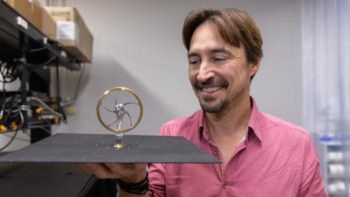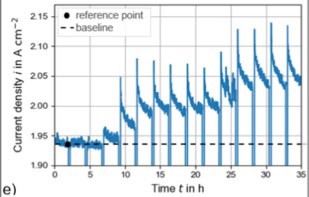Available to watch now, The Electrochemical Society, in partnership with Hiden Analytical and the Royal Society of Chemistry, explores the interfacial structure and properties for oxygen and carbon monoxide/carbon dioxide electrocatalysis
Want to learn more on this subject?

The design and development of active, stable and selective electrocatalysts for energy conversion reactions is key for the transition towards a sustainable future. Tailoring the structure of the electrochemical interface at the atomic and molecular levels allows us to understand the structure–function relations and enhance the electrocatalytic performance for renewable-energy conversion. In this webinar, Dr María Escudero-Escribano will present some recent strategies aiming to understand and engineer the interfacial structure and properties for oxygen and carbon monoxide/carbon dioxide electrocatalysis.
The first part will be focused on the oxygen reduction and evolution reactions (ORR and OER, respectively), which slow kinetics and limits the performance of proton exchange membrane fuel cells and electrolysers. She will present our work on oxygen electrocatalysis, from model studies on well-defined surfaces to the development of self-supported high-surface area nanostructured catalysts for ORR and OER (see figure, left).
In the second part, María will present our recent work on Cu single-crystalline electrodes in contact with different electrolytes aiming to understand the structure sensitivity for CO2 and CO reduction (see figure, right). We have studied the effect of pH, anion adsorption, and potential dependence of interfacial processes for CO reduction. We show how model studies are essential to understand the structure–property relationships and design efficient electrocatalysts for sustainable energy conversion.
Want to learn more on this subject?
 Dr María Escudero-Escribano is an Assistant Professor of Chemistry at the University of Copenhagen, Denmark, where she leads the NanoElectrocatalysis and Sustainable Chemistry group. Her research group investigates tailored electrochemical interfaces for renewable-energy conversion and electrosynthesis of green fuels and value-added chemicals. She obtained her PhD from the Autonomous University of Madrid, Spain, in 2011, for her work on electrocatalysis and surface nanostructuring using well-defined electrode surfaces. She carried out her postdoctoral research on oxygen electrocatalysts for fuel cells and water electrolysers at the Technical University of Denmark and Stanford University, US, before moving to the University of Copenhagen in 2017. María is chair of the Danish Electrochemical Society since 2018. She was awarded a Villum Young Investigator grant from the Villum Foundation in 2018 and is a PI of the Center for High Entropy Alloy Catalysis (CHEAC) from the Danish National Research Foundation. She has received numerous national and international awards in recognition of her early-career achievements, including the European Young Chemist Award (Gold Medal) 2016, the Princess of Girona Scientific Research Award 2018, the Energy Technology Division Supramaniam Srinivasan Young Investigator Award 2018 from The Electrochemical Society, the Spanish Royal Society of Chemistry Young Researchers Award 2019, and the Clara Immerwahr Award 2019 from UniSysCat.
Dr María Escudero-Escribano is an Assistant Professor of Chemistry at the University of Copenhagen, Denmark, where she leads the NanoElectrocatalysis and Sustainable Chemistry group. Her research group investigates tailored electrochemical interfaces for renewable-energy conversion and electrosynthesis of green fuels and value-added chemicals. She obtained her PhD from the Autonomous University of Madrid, Spain, in 2011, for her work on electrocatalysis and surface nanostructuring using well-defined electrode surfaces. She carried out her postdoctoral research on oxygen electrocatalysts for fuel cells and water electrolysers at the Technical University of Denmark and Stanford University, US, before moving to the University of Copenhagen in 2017. María is chair of the Danish Electrochemical Society since 2018. She was awarded a Villum Young Investigator grant from the Villum Foundation in 2018 and is a PI of the Center for High Entropy Alloy Catalysis (CHEAC) from the Danish National Research Foundation. She has received numerous national and international awards in recognition of her early-career achievements, including the European Young Chemist Award (Gold Medal) 2016, the Princess of Girona Scientific Research Award 2018, the Energy Technology Division Supramaniam Srinivasan Young Investigator Award 2018 from The Electrochemical Society, the Spanish Royal Society of Chemistry Young Researchers Award 2019, and the Clara Immerwahr Award 2019 from UniSysCat.






